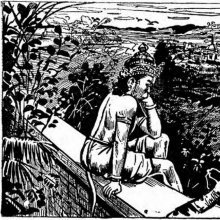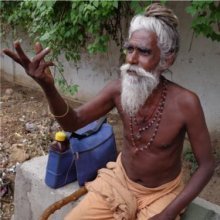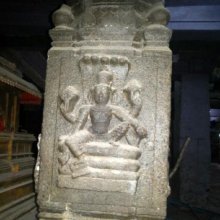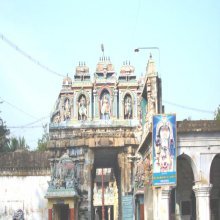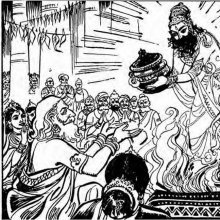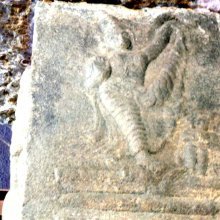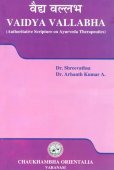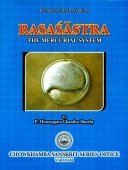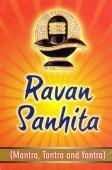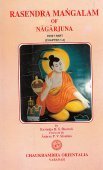He, Hē, Hé: 15 definitions
Introduction:
He means something in Buddhism, Pali, Hinduism, Sanskrit, the history of ancient India, Marathi, Hindi, biology, Tamil. If you want to know the exact meaning, history, etymology or English translation of this term then check out the descriptions on this page. Add your comment or reference to a book if you want to contribute to this summary article.
Images (photo gallery)
(+655 more images available)
In Buddhism
Tibetan Buddhism (Vajrayana or tantric Buddhism)
Source: MDPI Books: The Ocean of HeroesHe (हे) or Hekāra refers to the “syllable letter he” (of the word śrīheruka) and symbolically refers to the “emptiness of cause, etc”, according to the 10th-century Ḍākārṇava-tantra: one of the last Tibetan Tantric scriptures belonging to the Buddhist Saṃvara tradition consisting of 51 chapters.—Accordingly, “[...] (The meaning of the letter he, i.e., the emptiness of cause and so on, etc.—) The letter he [e.g., hekāra] is [as follows]: From the heart, [he should visualize] all [deities], such as Heruka, [who] reside on their own circles. [Vajra-]holders and others are originating; [he should know] all [of them] originating through visualization. That [letter he represents the principle that] the cause is empty by nature; there is no conceptualization of cause and so on as selves. That [letter he refers to] the selflessness of phenomenal existences by nature, [or the state of] being empty [Emptiness] brings the meditative union [...]”.

Tibetan Buddhism includes schools such as Nyingma, Kadampa, Kagyu and Gelug. Their primary canon of literature is divided in two broad categories: The Kangyur, which consists of Buddha’s words, and the Tengyur, which includes commentaries from various sources. Esotericism and tantra techniques (vajrayāna) are collected indepently.
India history and geography
Source: Cologne Digital Sanskrit Dictionaries: Indian Epigraphical GlossaryHe.—(IE 8-1), abbreviation of hemanta (q. v.). Note: he is defined in the “Indian epigraphical glossary” as it can be found on ancient inscriptions commonly written in Sanskrit, Prakrit or Dravidian languages.

The history of India traces the identification of countries, villages, towns and other regions of India, as well as mythology, zoology, royal dynasties, rulers, tribes, local festivities and traditions and regional languages. Ancient India enjoyed religious freedom and encourages the path of Dharma, a concept common to Buddhism, Hinduism, and Jainism.
Biology (plants and animals)
Source: Google Books: CRC World Dictionary (Regional names)He in Benin is the name of a plant defined with Zanthoxylum zanthoxyloides in various botanical sources. This page contains potential references in Ayurveda, modern medicine, and other folk traditions or local practices It has the synonym Fagara senegalensis (DC.) A. Chev. (among others).
Example references for further research on medicinal uses or toxicity (see latin names for full list):
· The Gardeners Dictionary (1768)
· Prodromus Systematis Naturalis Regni Vegetabilis (DC.) (1824)
· Grammar of the Hausa Language.
· Encyclopédie Méthodique, Botanique (Lamarck) (1788)
If you are looking for specific details regarding He, for example pregnancy safety, side effects, health benefits, diet and recipes, extract dosage, chemical composition, have a look at these references.

This sections includes definitions from the five kingdoms of living things: Animals, Plants, Fungi, Protists and Monera. It will include both the official binomial nomenclature (scientific names usually in Latin) as well as regional spellings and variants.
Languages of India and abroad
Marathi-English dictionary
Source: DDSA: The Molesworth Marathi and English Dictionaryhē (हे).—ind (S) A particle of respectful calling or addressing. Ex. hē rājā tujhēṃ kalyāṇa asō.
--- OR ---
hē (हे).—pron hē answers in poetry to hī She, or this word of the feminine gender. Also tē & jē answer to the popular tī & jī.
Source: DDSA: The Aryabhusan school dictionary, Marathi-Englishhē (हे).—ind A particle of respectful calling. pro She.
Marathi is an Indo-European language having over 70 million native speakers people in (predominantly) Maharashtra India. Marathi, like many other Indo-Aryan languages, evolved from early forms of Prakrit, which itself is a subset of Sanskrit, one of the most ancient languages of the world.
Sanskrit dictionary
Source: DDSA: The practical Sanskrit-English dictionaryHe (हे).—ind.
1) A vocative particle (oh!, ho!); हे कृष्ण हे यादव हे सखेति (he kṛṣṇa he yādava he sakheti) Bhagavadgītā (Bombay) 11.41; हे राजानस्त्यजत सुकविप्रेमबन्धे विरोधम् (he rājānastyajata sukavipremabandhe virodham) Vikr.18.17.
2) A particle used in challenging.
3) An interjection expressing defiance, envy, ill-will or disapprobation.
Source: Cologne Digital Sanskrit Dictionaries: Shabda-Sagara Sanskrit-English DictionaryHe (हे).—Ind. 1. A vocative particle. 2. A particle of calling out to, or challenging. 3. An interjection, expressing envy or malice. E. hi to go, or hā to go, aff. ḍe .
Source: Cologne Digital Sanskrit Dictionaries: Benfey Sanskrit-English DictionaryHe (हे).—1. A vocative particle, [Lassen, Anthologia Sanskritica.] 8, 18. 2. An interjection expressing envy or malice, He! [Pañcatantra] 37, 23; disapprobation, [Bhartṛhari, (ed. Bohlen.)] 2, 96.
Source: Cologne Digital Sanskrit Dictionaries: Cappeller Sanskrit-English DictionaryHe (हे).—[adjective] [vocative] particle.
Source: Cologne Digital Sanskrit Dictionaries: Monier-Williams Sanskrit-English DictionaryHe (हे):—ind. a vocative particle (‘oh!’ ‘ho!’ etc.; also said to express envy or ill-will or disapprobation), [Śatapatha-brāhmaṇa]; etc.
Source: Cologne Digital Sanskrit Dictionaries: Yates Sanskrit-English DictionaryHe (हे):—interj. Of calling to.
[Sanskrit to German]
Sanskrit, also spelled संस्कृतम् (saṃskṛtam), is an ancient language of India commonly seen as the grandmother of the Indo-European language family (even English!). Closely allied with Prakrit and Pali, Sanskrit is more exhaustive in both grammar and terms and has the most extensive collection of literature in the world, greatly surpassing its sister-languages Greek and Latin.
Hindi dictionary
Source: DDSA: A practical Hindi-English dictionaryHe (हे):—(ind) a vocative particle.
...
Kannada-English dictionary
Source: Alar: Kannada-English corpusHē (ಹೇ):—
1) [independent] an indeclinable used in calling a person’s attention.clause2) [independent] an indeclinable used to show one’s disgust, disrespect, anger, etc.clause
Kannada is a Dravidian language (as opposed to the Indo-European language family) mainly spoken in the southwestern region of India.
Tamil dictionary
Source: DDSA: University of Madras: Tamil LexiconHe (ஹெ) . The compound of ஹ் [h] and எ. [e.]
--- OR ---
Hē (ஹே) . The compound of ஹ் [h] and ஏ. [e.]
--- OR ---
Hē (ஹே) interjection An interjection. See ஏ⁵ [e⁵], 1.
Tamil is an ancient language of India from the Dravidian family spoken by roughly 250 million people mainly in southern India and Sri Lanka.
See also (Relevant definitions)
Starts with (+2100): Harpokrates, He bao di bu rong, He bao hua, He bao mu dan, He bao shan gui hua, He bao tie xian lian, He bing tie xian lian, He bo cao, He chun bei mu lan, He guo teng, He huan, He huan pi, He meng, He qing du huo, He qiu teng, He shi, He shou wu, He shuo rao hua, He ye jing quan cao, He ye shan mai dong.
Ends with (+1845): A-ghe kashe, Aadi mooruthe, Aadishe, Aankhe, Abaddhe, Abadhe, Abhicakshe, Abhidhe, Abhikamkshe, Abhilashe, Abhimukhe, Abhipracakshe, Abhiprishthe, Abhirakshe, Abhivaddhe, Abhivamche, Abhivuddhe, Abhyarudhe, Abhyashe, Abo lakoshe.
Full-text (+25192): Vishnu, Parashurama, Vasudeva, Narada, Rishabha, Kubera, Vyasa, Yama, Vamana, Indra, Varuna, Sagara, Agni, Sanjaya, Vishvakarma, Brahma, Ma-hae, Rahu, Kumbhakarna, Ma-hae-ton.
Relevant text
One of your search terms exceeds the minimun character amount per search term. This amount currently equals 2.
No search results for He, Hē, Hé, Hae; (plurals include: Haes) in any book or story.
Related products
(+51 more products available)
